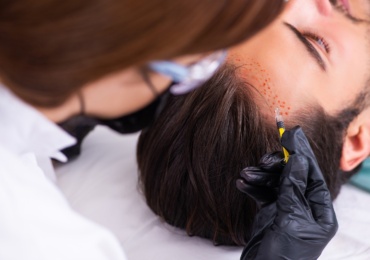Hair restoration is a popular solution for people struggling with thinning or balding hair, and one of the most common questions that patients often ask is, “are hair transplants permanent?” This is an important concern because anyone considering the procedure wants to understand how long the results will last, what factors may affect the longevity, and whether the investment will truly bring lasting confidence. In this article, we will provide a comprehensive look at everything you need to know about the permanence of hair transplants, the techniques involved, the healing process, and the lifestyle choices that play a role in maintaining results.
Understanding Hair Transplants
A hair transplant is a surgical procedure that involves moving healthy hair follicles from a donor area (usually the back or sides of the head) to areas experiencing thinning or baldness. The principle behind this is that the donor hair is genetically resistant to hair loss, which is why transplanted hair can continue growing even after surrounding hair has thinned.
The two most common methods of hair transplantation are:
- Smart FUT (Follicular Unit Transplantation): In this method, a strip of scalp is extracted from the patron area, and follicles are dissected and transplanted to balding areas.
- Smart FUE (Follicular Unit Extraction): This modern technique involves extracting unique follicles from the donor area and implanting them in thinning areas.
Both techniques enclose proven to be effective, but their long-term results can vary depending on the patient’s hair type, health, and how well they care for their hair after surgery.
Why Transplanted Hair Lasts
One of the biggest reasons transplanted hair is permanent is due to donor dominance. This concept explains why hair from the back and sides of the scalp does not typically fall out, even in advanced cases of male or female pattern baldness. When these follicles are moved to balding areas, they retain their resistance to hair loss, allowing them to grow permanently.
Additionally, transplanted hair blends seamlessly with your natural hair. Once the follicles are fully healed and the hair starts growing, it behaves just like any other hair on your head. This natural integration is what makes hair transplants so effective and long-lasting.
Factors That Influence Permanence
While hair transplants are permanent, several factors determine how successful and lasting the results will be:
1. Age of the Patient
Younger patients who still have progressive hair loss may require follow-up procedures in the future. Older patients with stabilized hair loss may see more permanent results in a single procedure.
2. Type of Hair Transplant Technique
Smart FUT and Smart FUE both provide permanent hair, but smart FUE often has a faster recovery and less visible scarring. The choice of procedure depends on the patient’s needs and the surgeon’s recommendation.
3. Extent of Hair Loss
The severity of baldness can affect the outcome. Patients with advanced hair loss may require multiple sessions to achieve fuller results.
4. Lifestyle Choices
Diet, stress management, and scalp care all impact hair health. Even transplanted hair benefits from a healthy lifestyle.
5. Underlying Medical Conditions
Certain medical conditions can affect hair growth. Conditions like hormonal imbalances or autoimmune diseases may influence long-term results.
What to Expect After a Hair Transplant
After surgery, patients go through a healing process before seeing the final permanent results. The timeline typically includes:
- Initial Shedding: Transplanted hair usually falls out within 2–3 weeks after the procedure. This is normal and temporary.
- New Growth Phase: New hair starts to grow after 3–4 months.
- Visible Results: By 6–9 months, most patients see noticeable hair growth.
- Final Outcome: Full, permanent results are usually visible after 12–18 months.
Can Hair Loss Still Happen After a Hair Transplant?
While transplanted hair is permanent, it’s important to note that existing non-transplanted hair may continue thinning due to genetic or environmental factors. This means that while the transplanted area remains covered, surrounding areas may still thin out over time.
For this reason, many patients opt for additional treatments such as:
- PRP (Platelet-Rich Plasma) therapy to strengthen existing hair.
- Medications like finasteride or minoxidil to slow down further hair loss.
- Follow-up transplant sessions for enhanced density.
How to Maintain Permanent Results
To keep your hair transplant results looking their best, here are some practical tips:
- Follow Post-Surgery Instructions: Proper aftercare is critical for healing and follicle survival.
- Eat a Balanced Diet: Nutrients like biotin, iron, and protein support healthy hair growth.
- Avoid Smoking and Excessive Alcohol: These habits can affect circulation and hair health.
- Protect Your Scalp: Limit sun exposure and wear protective hats if needed.
- Consider Maintenance Treatments: Ongoing treatments can strengthen hair and prevent future thinning.
Are Hair Transplants Right for You?
Deciding whether to undergo a hair transplant depends on several factors, such as the stage of your hair loss, your expectations, and your commitment to maintaining healthy hair. Permanent results are achievable, but patients should have realistic expectations and understand that natural aging will still influence hair over time.
Conclusion
So, are hair transplants permanent? The answer is yes—transplanted hair is designed to last a lifetime because it retains its genetic resistance to hair loss. However, the overall outcome depends on factors like age, technique, lifestyle, and the progression of natural hair loss. With proper care, patients can enjoy long-lasting effects that not only restore their hairline but also boost confidence and self-image.
Hair transplants offer one of the most reliable and permanent solutions to hair loss. By understanding the process, the healing journey, and the lifestyle choices that support long-term success, individuals can make informed decisions and enjoy the endless benefits of a fuller head of hair.
